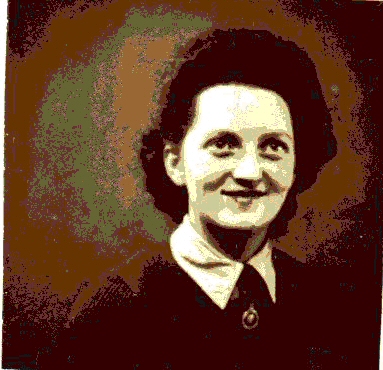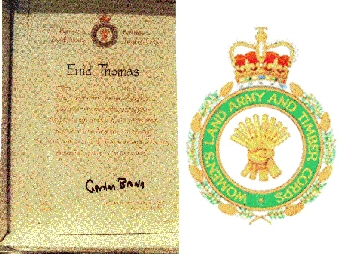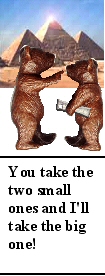EVENTS BONANZA!
Christmas Fayre
This will be on Saturday 8th November at Ebenezer so please bring donations to the Museum; we need handicrafts, bric a brac, toys, bathroom, books etc as well as items for the bran tub, crackers and raffle prizes. We will need helpers to man the stalls so please let Peggy know if you can help. We also need prizes for the grand raffle at the December lecture and a more modest raffle at the Social Evening in late November; please help.
Museum Society Social Evening
This promises to be a real treat! Please come along to the Commercial on Tuesday 25th November at 7.00pm for an evening of fun and entertainment. Tickets £3 including light refreshments.
Craft Fair
Keep a place in you diary for this event on Saturday 29th November upstairs in the Metropole. If the Fair is as good as last year’s you will have an opportunity to buy some unusual Christmas gifts at reasonable prices. The Museum Society is taking a stall so we will need craft items to sell as well as volunteers to man the stall. Again, please contact Peggy for details.
European Archaeology
Frank Olding will be running another series of adult lectures at the Museum starting on Friday 16th January 2009 at 10.00am. The full course consists of six lectures. You can pick and mix at £3 a lecture or sign up for all six at a reduced fee of £15. Frank’s previous lectures proved popular and so you can be sure of an entertaining as well as educational couple of hours.
Museum Lectures
Our October speaker, John Evans, is known for his thorough research. His talk on James Green was up to his usual high standard and was much appreciated. This month’s topic looks at the growth of the South Wales ports as coal became king.
Fundraising October – to be announced
Diary Dates
Wednesday 5th November 2008 - Coal Shipping at South Wales Ports by Tony Jukes
Saturday 8th November 2008 – Christmas Fayre
Tuesday 25th November 2008 – Museum Society Social Evening at The Commercial
Saturday 29th November 2008 – Craft Fair upstairs in the Metropole.
Wednesday 3rd December 2008 – A Woman’s Lot in Tudor and Stuart Times by Susanne Allen
Friday 16th January 2009 - First of 6 lectures on European Archaeology at 10.00am at the Museum. £3 per lecture or all 6 for £15.
Lectures start at 7.00pm in the Metropole Theatre, with teas and a chat downstairs in the Museum afterwards. Entry is £2 and the public are most welcome.
Express café
The new look café should be finished shortly. Come along and see for yourself!
Local Voices ‘Organisations’
MOOSE INTERNATIONAL - ABERTILLERY LODGE NO.17
While in America James Davies was impressed by the close family bond the herds of moose had. They looked after their elderly and feeble and he thought what a good example this was for humans.On his return to Wales he founded The Loyal Order of Moose with the first lodge being Tredegar.No1
In 1929 Abertillery Lodge was formed - No 17. Their aim was to help others less able than themselves not only in their own circle, but in the wider community. They devoted themselves to charitable work but at the same time socialised among themselves and enjoyed their fundraising. These standards are still uppermost today and it is a thriving organisation whose main aim is to raise money for charity. While doing this they have a great social and friendly life. The brothers of the Order take care of the widowed by giving them transport to hospital and generally including them in all the functions of the Lodge, including their monthly luncheon club outings.
Over the years they have supported many charities, including the British Heart Foundation, Alzheimer’s Society, Diabetic Society, Home Farm Trust and MacMillan Nurses. Recently they have given two substantial donations to Wales Air Ambulance and for the next two years have committed themselves to raising a substantial amount for Ty Hafan The Children’s Hospice in Wales. The ladies in the Ladies Circle each fill an empty Steradent tube with 20p pieces which when full amounts to about £20.00. This is an ongoing effort and the proceeds are always given to the Hospice of the Valleys.
Various means are used to raise money including party nights, Chinese auctions, skittles nights, lucky dips, coffee mornings etc to which the public are invited. Many ladies knit blankets for premature babies, others sew and crochet and make fun animal, penguins, chicks teddies etc, which are sold
Recently Abertillery Ladies Circle won the award for being the best fundraiser in Blaenau Gwent and at a ceremony at Ebbw Vale received a shield, statue and certificate.
It is a most friendly organisation, and full of fun.
The Roving Reporter
Guess Who?
 The stunning brunette, on the left, is our own Enid Thomas (now Dean) in her Land Army Uniform. Featured below is the certificate and badge which were recently awarded to her for her contribution to the war effort, some tales of which have featured in previous editions of the Newsletter.
The stunning brunette, on the left, is our own Enid Thomas (now Dean) in her Land Army Uniform. Featured below is the certificate and badge which were recently awarded to her for her contribution to the war effort, some tales of which have featured in previous editions of the Newsletter.

Well done, Marge!
Marge Selway is familiar to us as the lady responsible for putting together the lecture programme – no easy task. However, Marge has other talents! She is an accomplished needlewoman and knitter and has been putting her knitting skills to good use. Earlier this year she and a friend, Mrs Lippazan, knitted a large parcel of hats for Save The Children. More recently, Marge knitted a large parcel of jumpers for a campaign run by Feed The Children. Hats off to you, Marge.
Blaenau Gwent Heritage Forum
Day School October 2008
Blaenau Gwent Heritage Forum held its annual Day School at Ysgol Cwmraeg, Brynmawr. The day school was supported by Blaina, Brynmawr and Tredegar Town Councils and Blaenau Gwent County Borough Council. Mr Peter Jones, Chairman Heritage Forum, opened the meeting giving a brief outline of the work of the Forum which had re-issued Powell’s History of Tredegar which now included an index and maps, and were now issuing a Journal twice a year.
Peter then welcomed the first speaker, Dr Stephen Briggs, former Head of Archaeology for the Royal Commission of Ancient Monuments in Wales. His talk was entitled “The History of the Welsh Landscape through Parklands and Gardens”. Gardens had existed from medieval times but an interest in garden archaeology had only begun in the 1920s and 30s. It came to the fore in Britain in the 1060s but it was not until the 1980s that interest in Welsh gardens was aroused. There are many examples in Gwent; the 16th Century knot garden at Raglan Castle, the 17th Century Dutch garden at Tredegar House and the 19th Century garden at Bedwellty House, Tredegar. His talk was illustrated with an interesting slide presentation.
The second speaker was Dr Madeleine Grey from University of Wales, Newport. Her talk was entitled “Tourism and Industry in 18th Century South Wales”. The tourists of the 18th Century were often artists and clergymen who were fascinated by the early industrial development in South Wales. Coxe’s Tour of Monmouthshire gives a detailed account of the Iron Industry in Blaenavon. Many of the artists included industrial scenes in their paintings. Dr Grey illustrated her talk with slides of paintings from the period, and extracts from the writings and diaries of the visitors.
After a buffet lunch the afternoon resumed with Mr Roger Morgan, the Barber Surgeon. He outlined the history and development of medicine through the work of the Barber Surgeon. In the 10th Century barbers were emplyed in the monasteries to cut hair and shave monks. In the 12th Century they were expelled from the church and therefore set up their own businesses. A Barber Surgeon served an 8 year apprenticeship and belonged to a Guild. They were responsible for much of the early development of surgical skills. Mr Morgan was dressed in period costume and demonstrated the use of many of the tools which were on display.
The final speaker was Mr Peter Walker, who is Manager of Big Pit, Blaenavon. He spoke of their development from a small local museum to becoming a national museum of world wide renown. Their aim was to provide an enjoyable experience for all visitors, young and old, those with knowledge of and an interest in the mining industry, and those with no previous knowledge. All members of staff had worked in the industry and were therefore able to relate their experiences to visitors. The talk was illustrated with a series of slides which showed the displays and experiences available to visitors. There were plans for future development and expansion but they were dependent on available finance.
Peter Jones closed the day with thanks to those who had attended; the Welsh School for the use of their facilities; the Councils for their financial support and members from Brynmawr who had facilitated the arrangements. He ended on a positive note hoping that the day had been an interesting experience for those who had attended and that the Forum would be able to hold a similar event in 2009.
The Forum holds monthly meetings. Its membership comes from Local History and Museum Societies together with individuals with an interest in local history and the heritage of our locality. For further details of the Forum and its publications contact the Secretary, Janet Karn Tel No. Tredegar 722687.
Jean Colwell
Book Corner
Industrial Archaeology in Blaenau Gwent by John van Laun
Blaenau Gwent is rich in industrial archaeology sites. This small volume by a noted archaeologist, sub titled “In the footsteps of the Iron Makers” illustrates this, firstly with an outline of its industrial history and secondly with a series of trails through the area. The Heads of the Valleys area was the largest producer of iron in Britain and the towns across the region were at the centre of this development. Five towns: Beaufort, Sirhowy, Ebbw Vale, Nantyglo and Tredegar grew up around these works between 1770 and 1802 and were well established by the end of the 18th Century, long before the growth of coal mining from the 1850s. Other associated industries include brick-making and lime quarrying. The book briefly details the working of these industries, how this resulted in a network of canals and railways to move the products to market, and mention of the social conditions and personalities of the time. The 7 trails cover Blaenau Gwent and include maps, line drawings and photographs. The book was commissioned by Blaenau Gwent CBC and copies are available in the Museum at £6.50 of which £2 is donated to the Museum.
Jean Colwell
Museum Matters
Last month Peggy and I took two short breaks. The first was at the seaside resort of Weymouth and the second was at West Bay, famous for where Reginald Perrin walks into the sea and the other TV series Harbour Lights starring Nick Berry.
Both of these resorts are near to the County town of Dorchester that boasts six museums. Not surprisingly Thomas Hardy is featured prominently in the County of his birth but there are two unusual museums that both Peggy and I wanted to visit. They are the Tutankhamun and the Mummies Exhibition and the Terracotta Warriors museum.
On our first visit we visited the Egyptian museum. On entering we came to a room set up with the images of Howard Carter, Lord Caernarfon and his daughter. Carter is holding a candle to a small hole he has made into the tomb wall and when asked by Caernarfon, “can you see anything?” utters the immortal words “Yes wonderful things”. Moving on into the next room you are in the tomb as it was when it was discovered; it is an exact replication with the items set out as they were. The atmosphere and realism of the exhibits gives an idea of what it must have felt at the time of the discovery. The Mummies Exhibition, which is also on display, is a collection of reproduced mummies that are on display in the Egyptian and other museums.
I was able to add to my Egyptology collection from the museum shop but due to my walking pace (That of a snail with a ball and chain) we did not have enough time to visit the Terracotta Warriors museum this we did on our second trip. The Terracotta Warriors museum, (Peggy’s favourite) is a collection of terracotta images and objects made to scale by the same workmen who are restoring the images as they are uncovered in China. The workmanship is such that only on close inspection are they discernable. Also on display are the clothing that would be worn by the generals and officials of that period. Both these museums have explanatory film shows in side rooms.
Some purists may say that these are not true museums! I believe that these types of museums provide a resource for people who do not have the means to visit China, Egypt or other World Heritage Sites. This is evident by the number of adults and children I saw in these museums.
In the October/November issue of the Ancient Egypt Magazine is an article about two heads of Amenhotep III from his Mortuary Temple at Thebes which are on display in the British Museum. The Museum has specialists and conservators whose job it is to replicate objects for various reasons. The heads were part of a touring exhibition and a copy of the head was made in 2000 for the opening by the Queen of the new Great Court in the museum.
New finds and the restoration of Amenhoteps Mortuary Temple is in progress and in 2006 the project asked the British Museum if it would be possible to have copies of the two heads. This work was commissioned and paid for by the project. The two heads were sent to Egypt in 2007 and one of them has been temporarily attached to its body.
Members of our society will be aware that our museum has reached Full Registration and has applied for the new higher Accreditation Standard.
One of the policies that had to be fine tuned for this was our Acquisitions Policy. We had agreed on collecting in our area only, a new clause prevents us collecting objects from abroad. This is to prevent the striping of another countries heritage. This has led me to an Ancient Egypt Magazine article for October/November 2007.
A formal request for the loan to Egypt of some important Egyptian antiquities
The Egyptian Supreme Council of Antiquities (SCA) recently formally requested the temporary loan of unique ancient Egyptian antiquities kept in several museums abroad for the inauguration of the Grand Egyptian Museum at Giza in 2011.
The objects requested are: the Rosetta Stone, now in the British Museum in London; the bust of Nefertiti in the Egyptian Museum in Berlin; the statue of Great Pyramid architect Hemiunnu in the Romer-Pelizaeus Museum in the German city of Hildesheim; the Dendara Temple Zodiac in the Louvre in Paris, and the bust of Khafra Pyramid builder Ankhaf in the Museum of Fine Arts in Boston, USA.
Dr. Zahi Hawass said he hoped the foreign countries would accept the Egyptian request in the light of distinguished ties with these countries.
"The Egyptian government will secure the safe return of these objects to the lending institutions," Dr. Hawass said. Egypt will deal with each museum on an individual basis.
 "If a museum cooperates with us, then we will continue our good relations and cooperate with them in a mutually beneficial, scientific manner," he said.
"If a museum cooperates with us, then we will continue our good relations and cooperate with them in a mutually beneficial, scientific manner," he said.
The Museums in question have yet to respond formally to the Egyptian request.
Countries all over the world are involved in the archaeological exploration, conservation and UNESCO involvement in saving the ancient sites from the rising waters of the Aswan Dam but Dr. Zahi Hawass article certainly gives us Food for thought?
Don Bearcroft Curator
